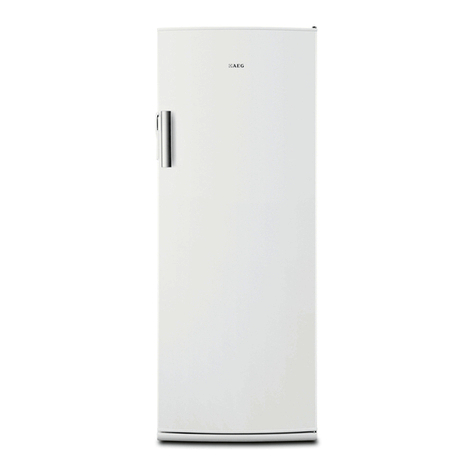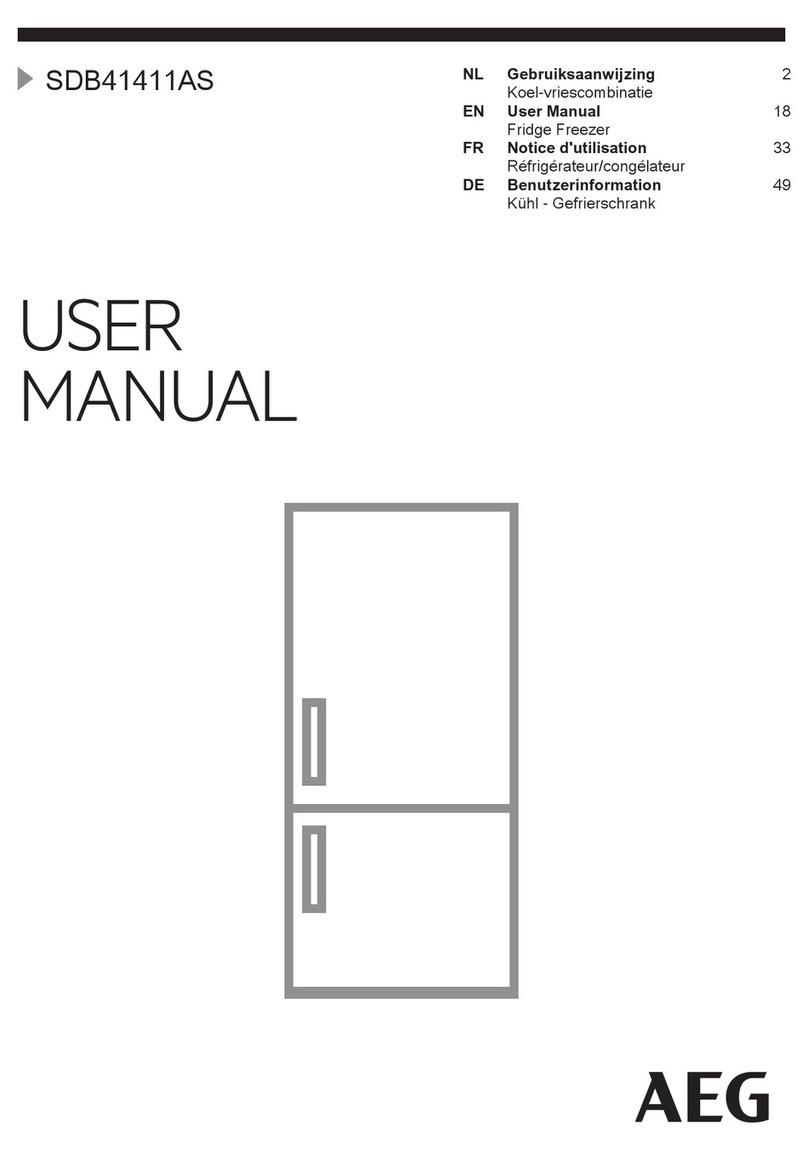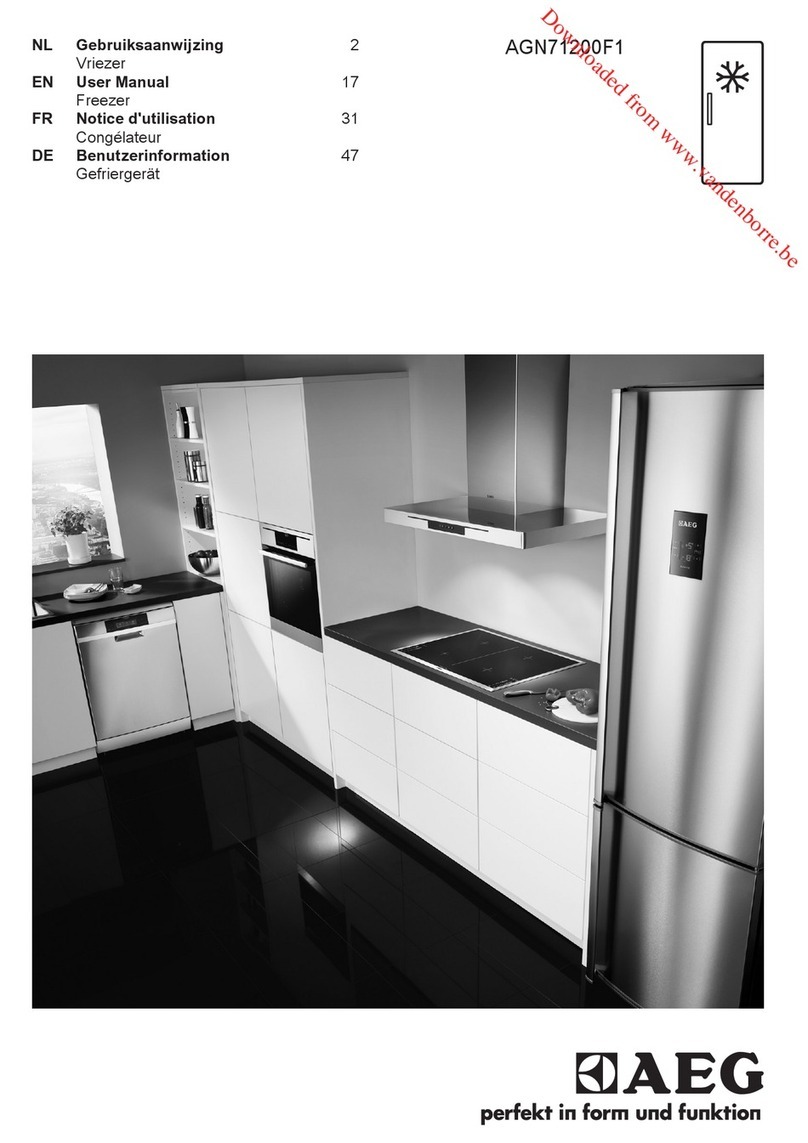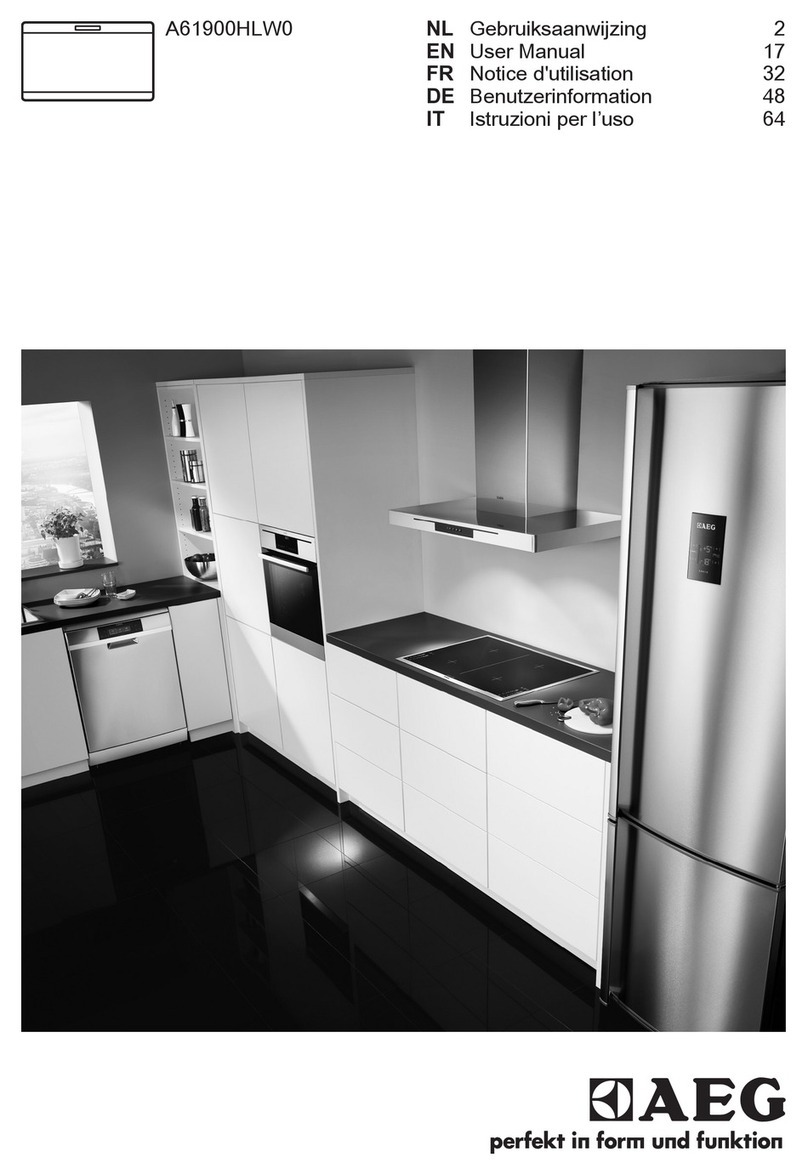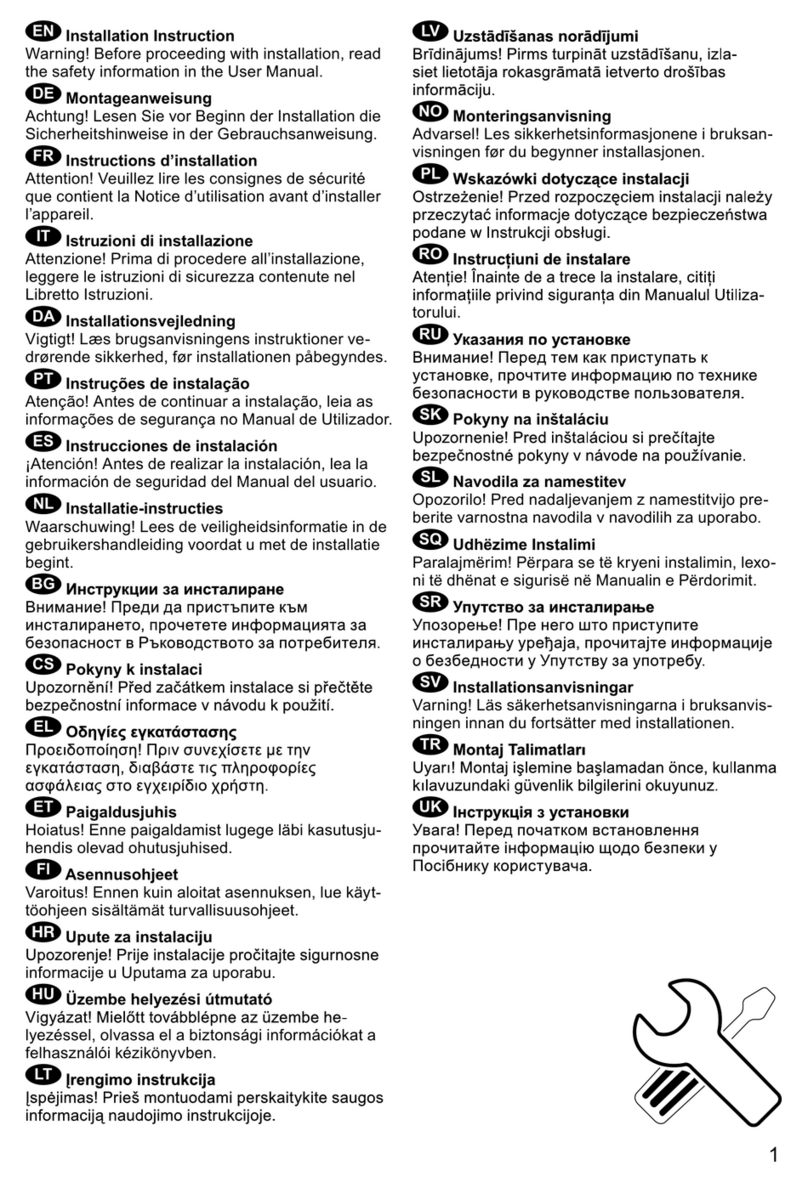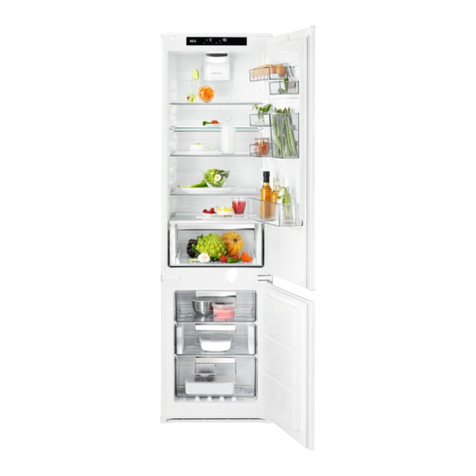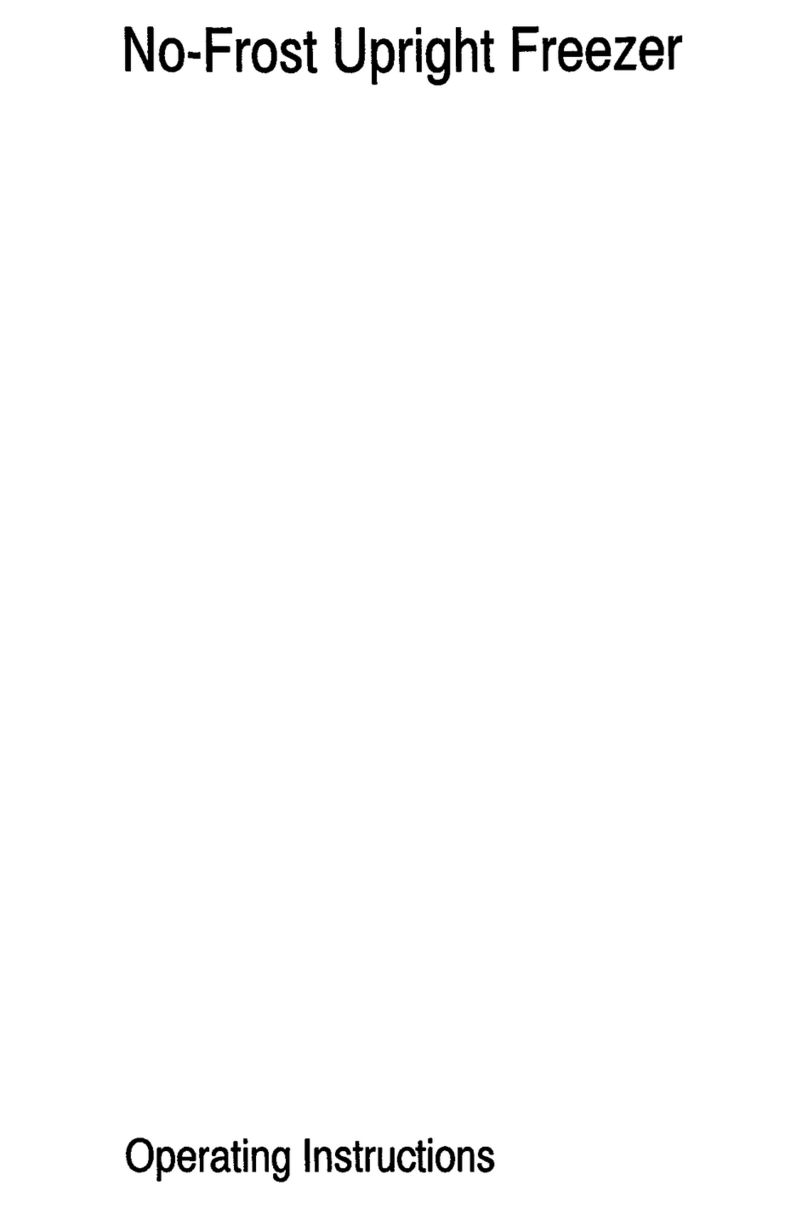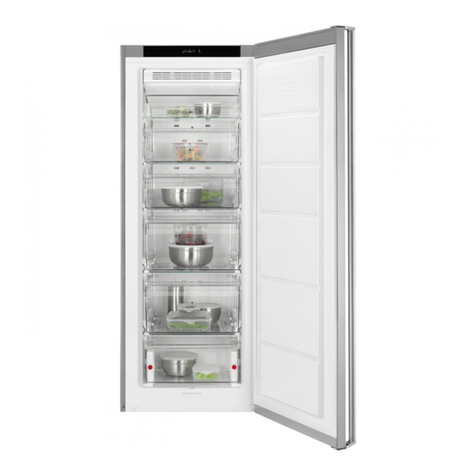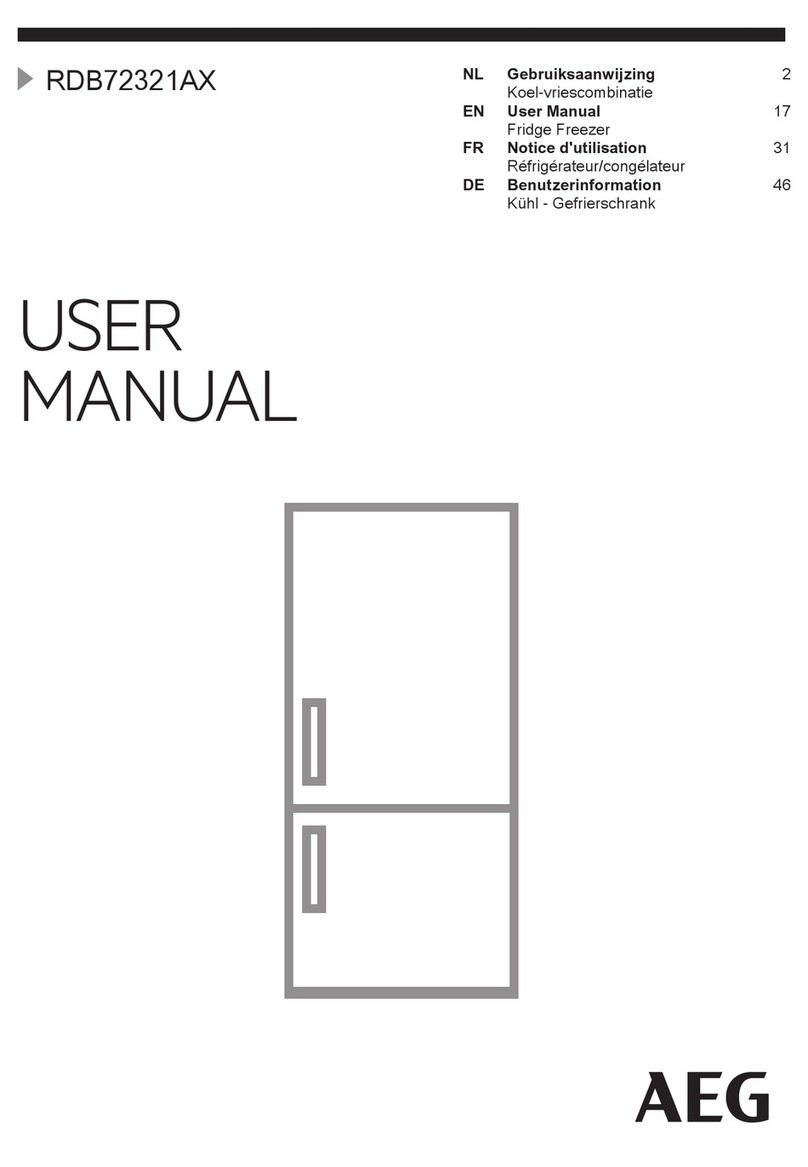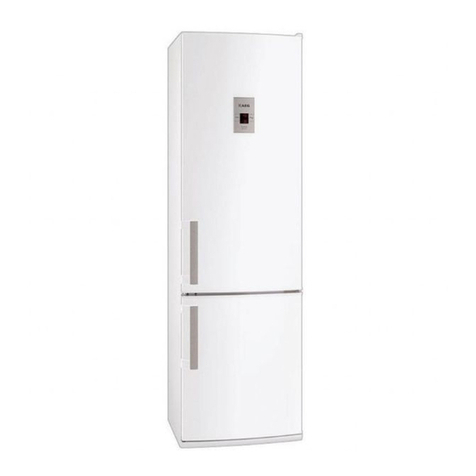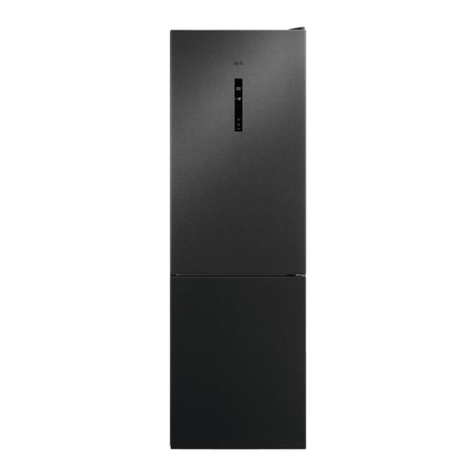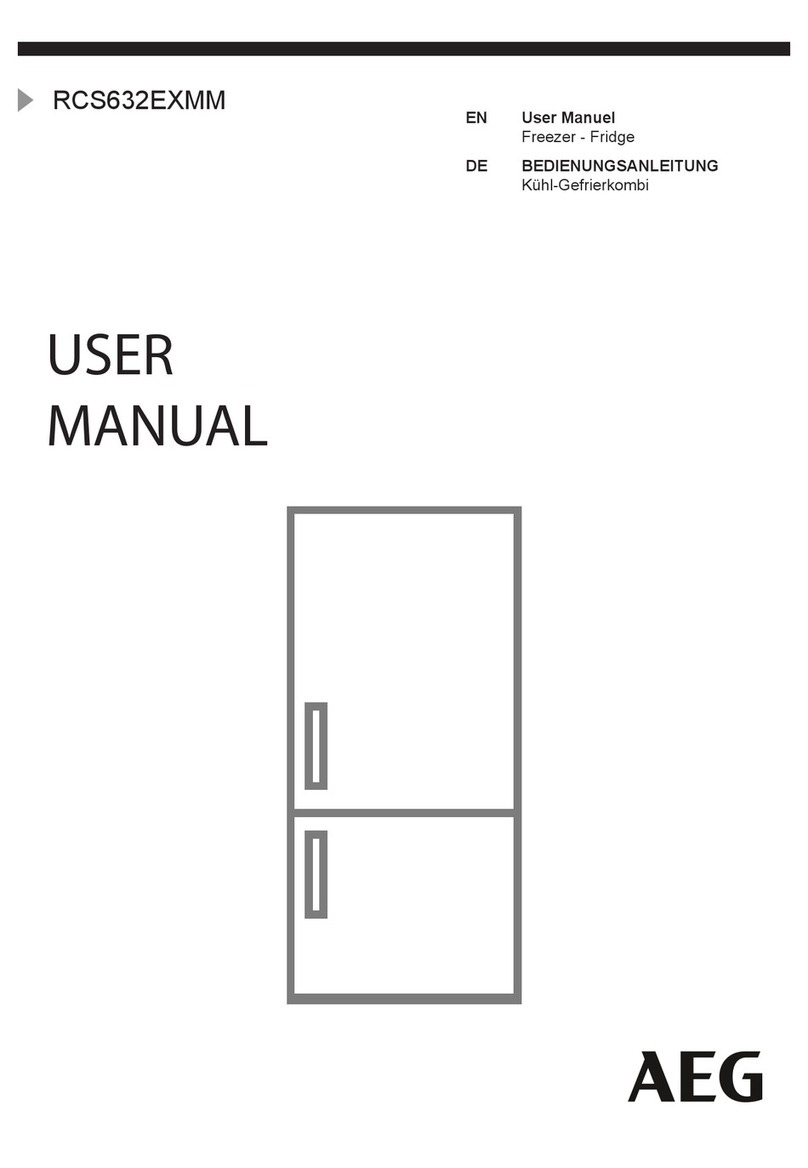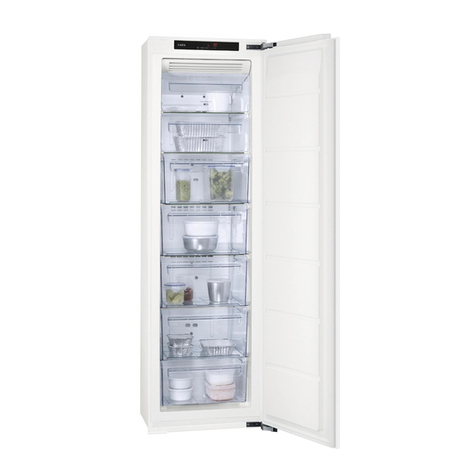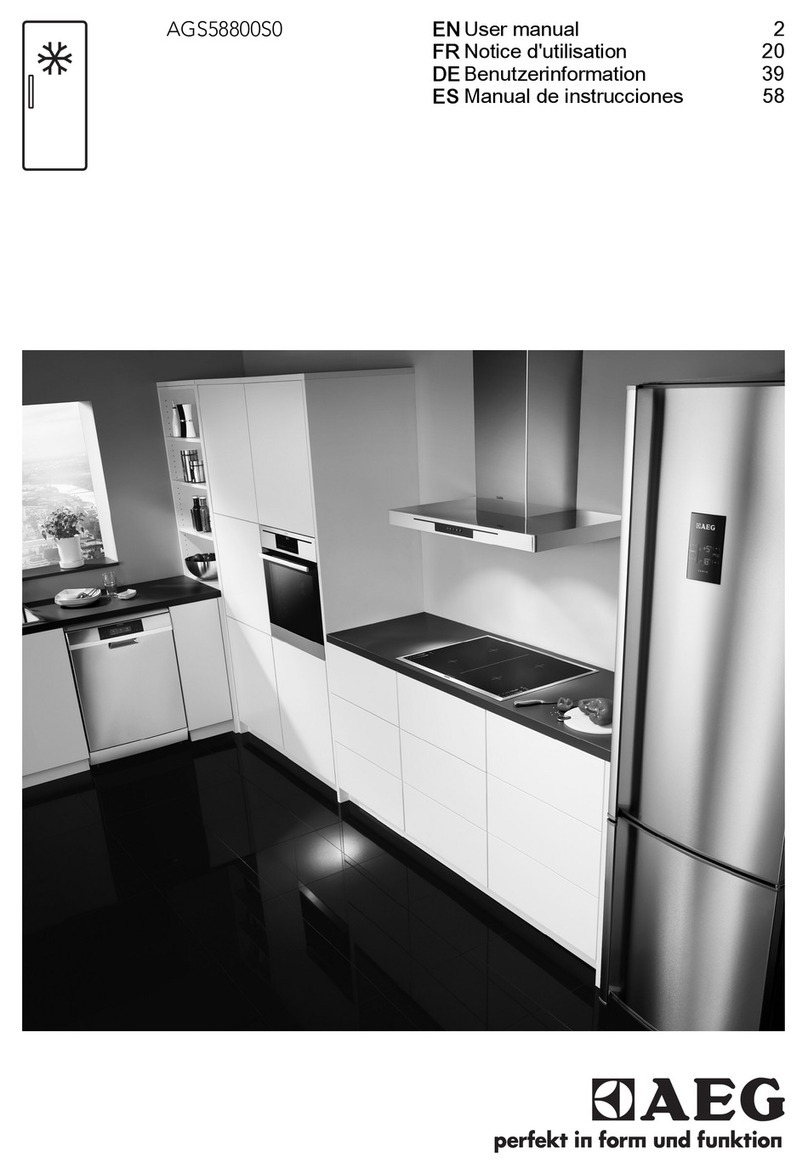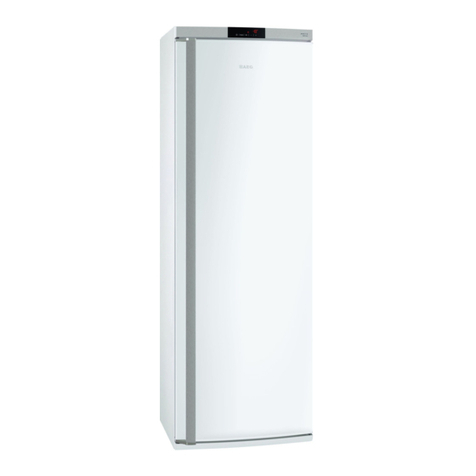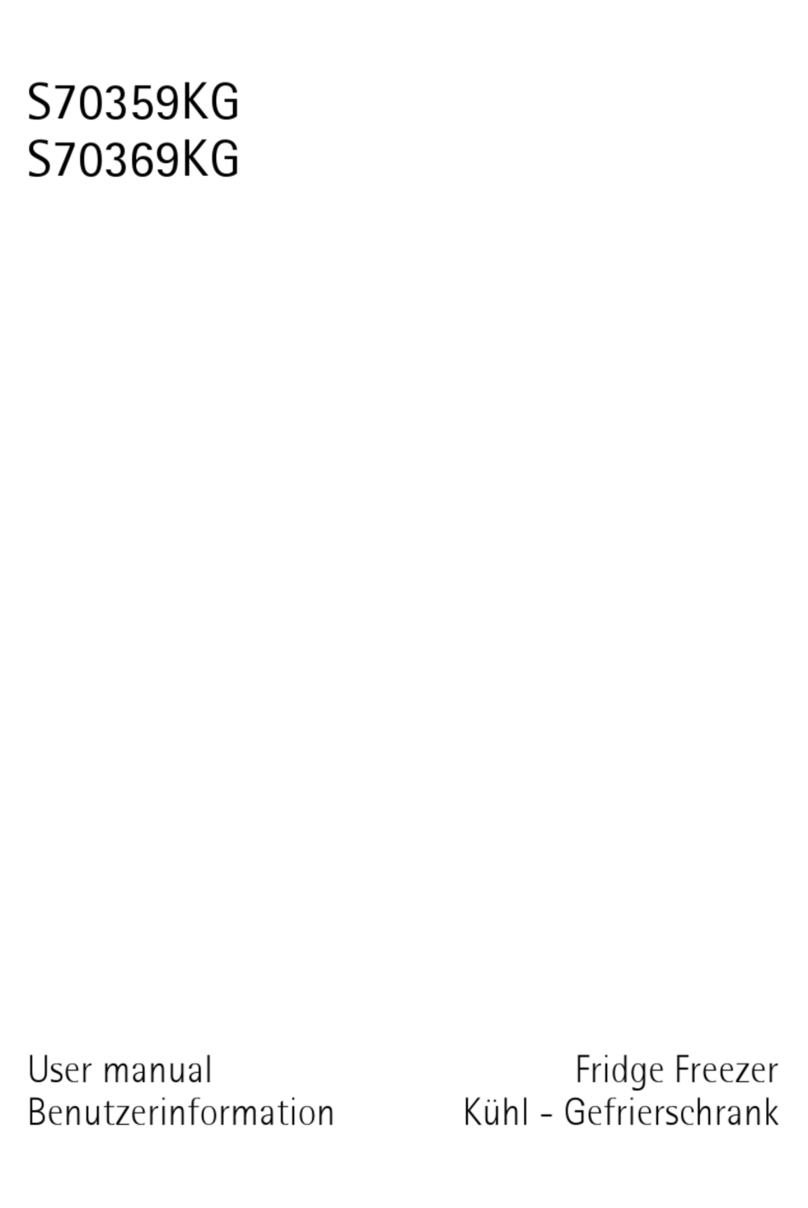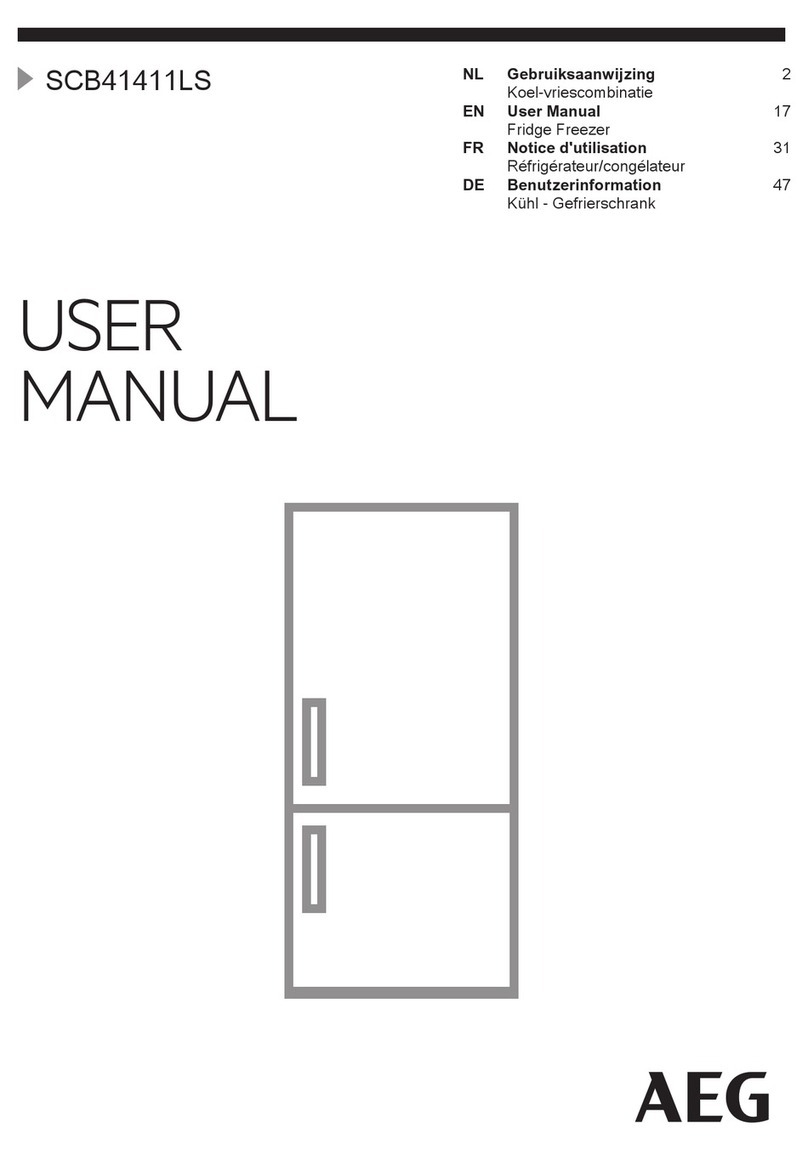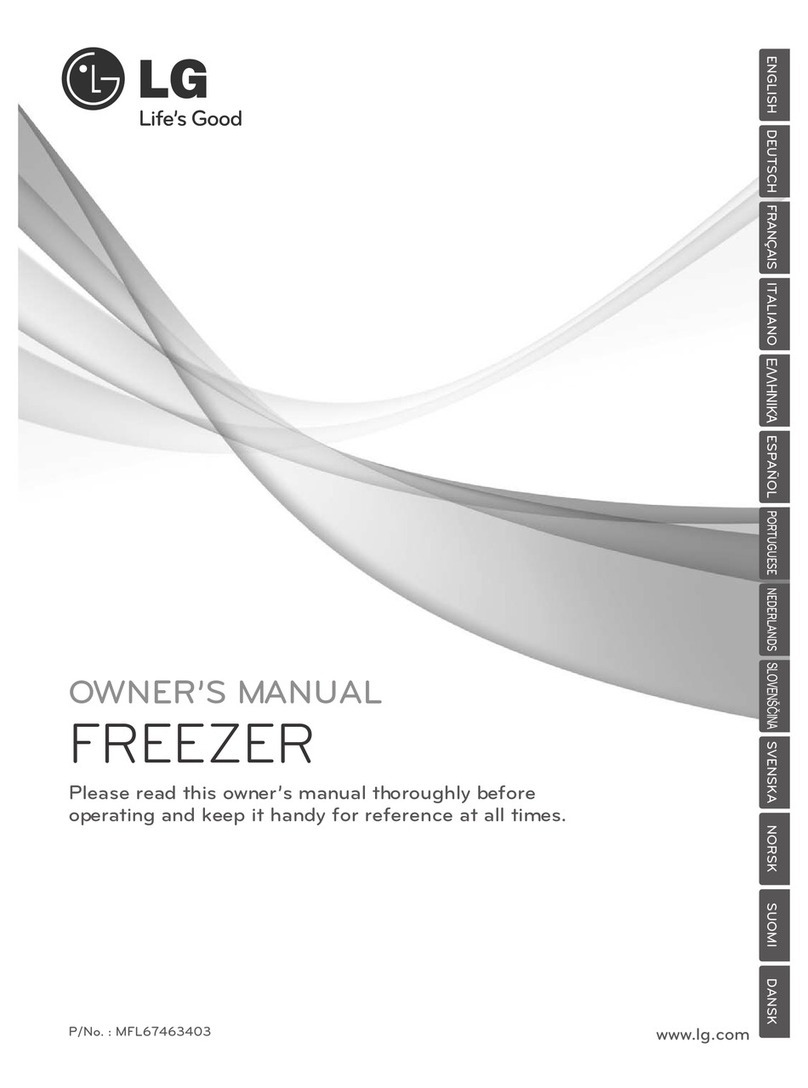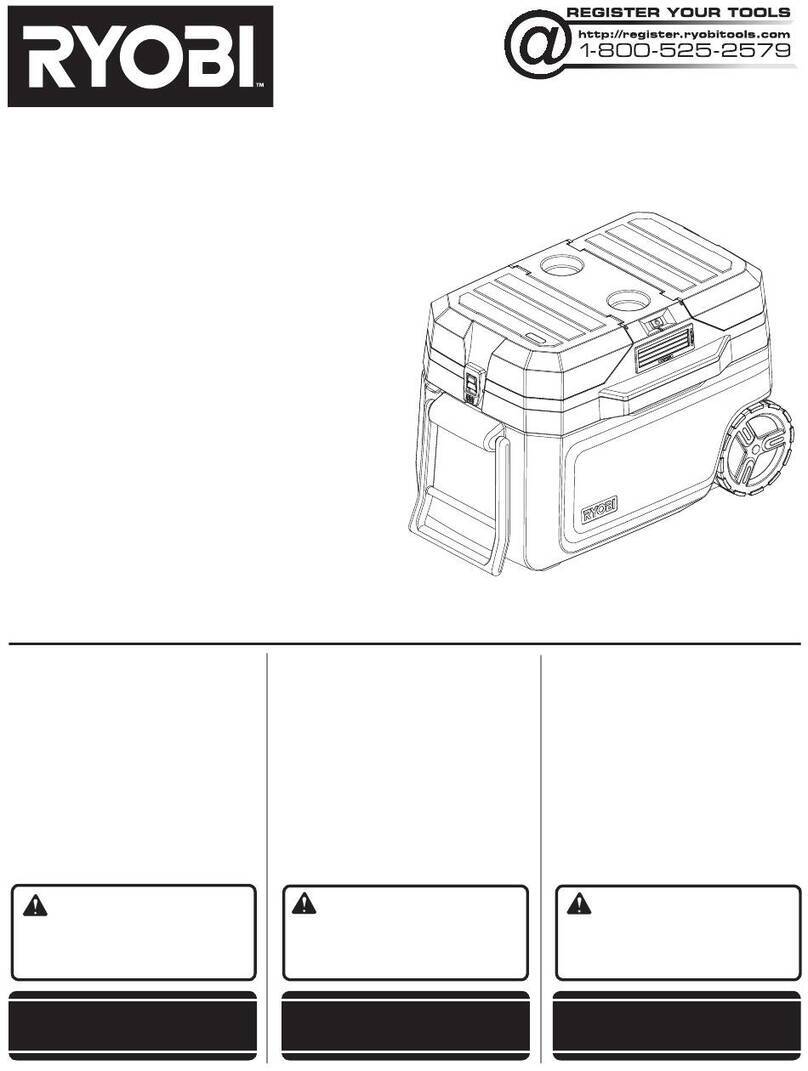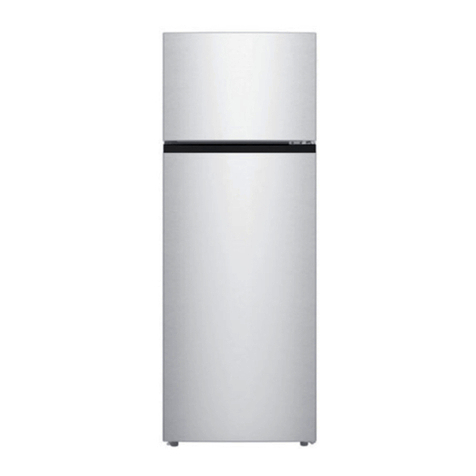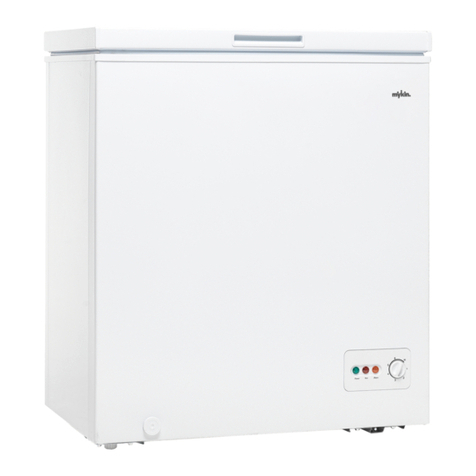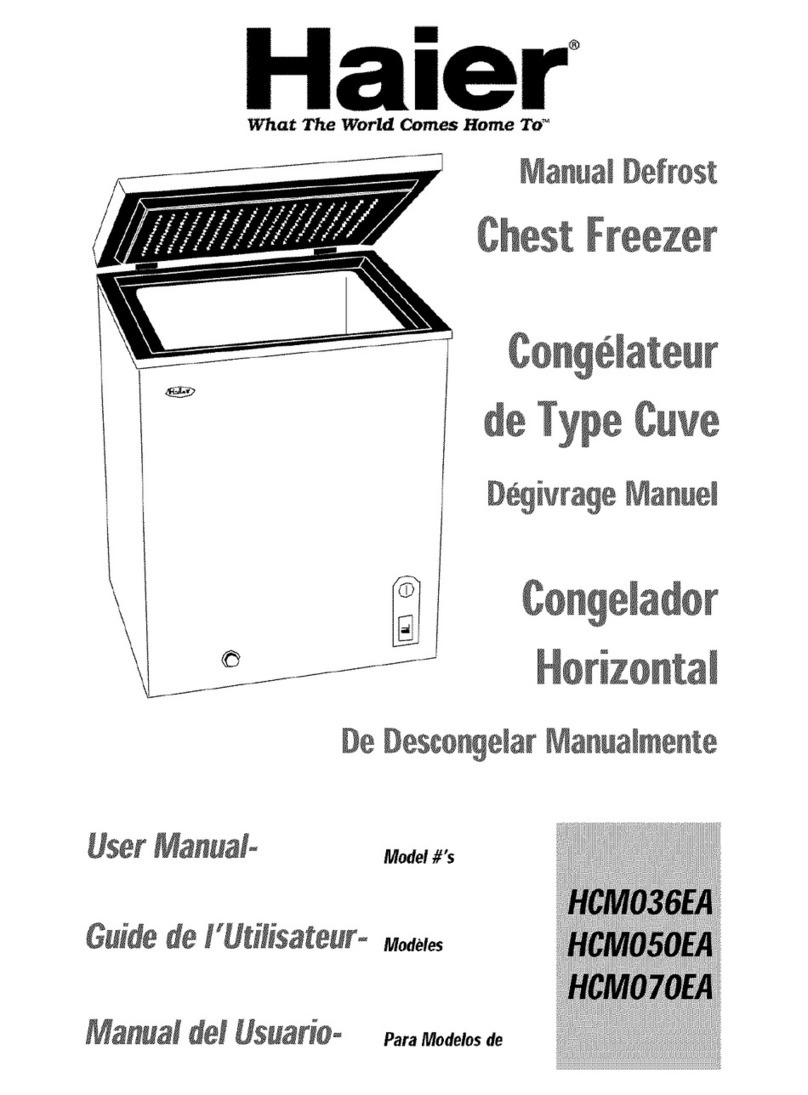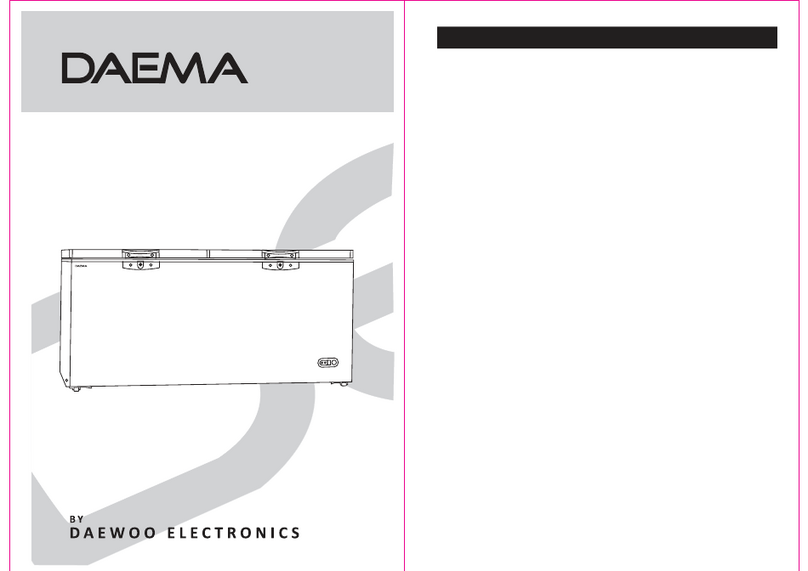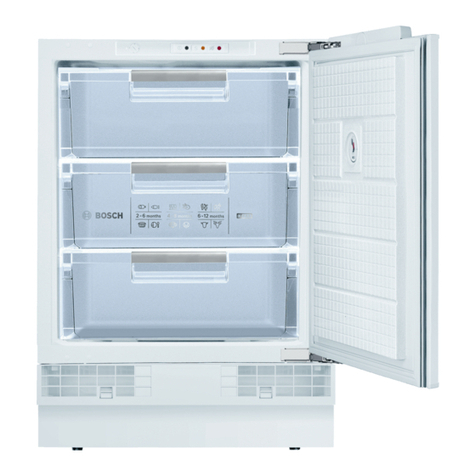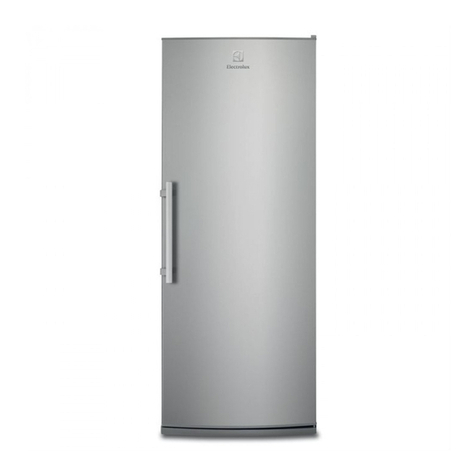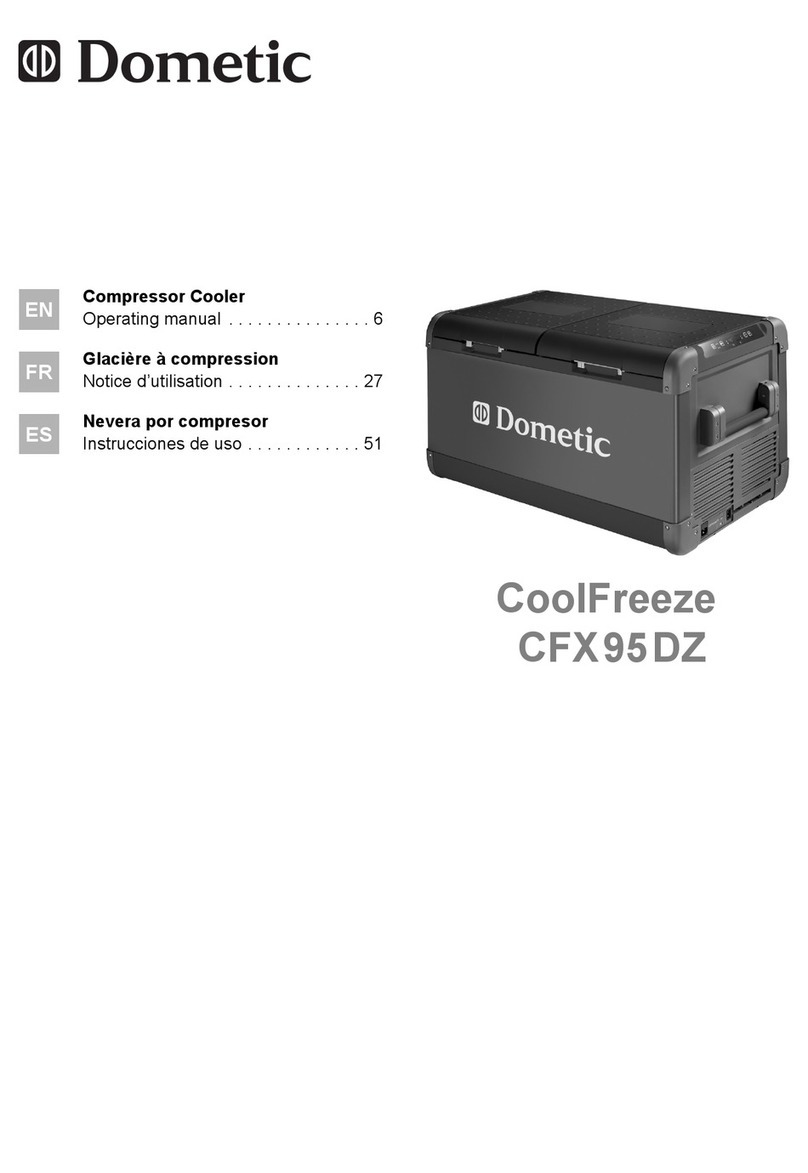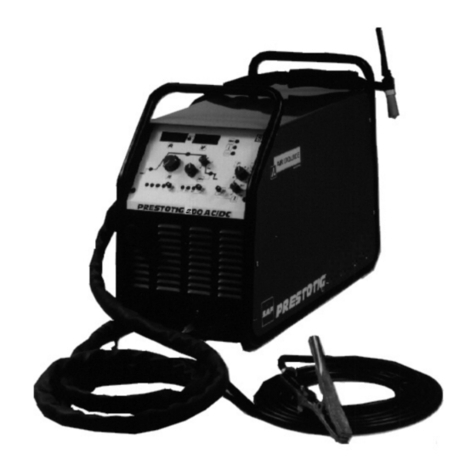5
Before disposing of old appliances make them inoperable. Remove plug
from mains, sever the power cable, remove or destroy any snap or latch
closures. This eliminates the danger that playing children lock themselves
into the appliance (danger of suffocation!) or place themselves into other
life-endangering situations.
Children often do not recognise the dangers involved with household
appliances. Please provide for the necessary supervision and do not allow
children to play with the appliance!
Daily Operation
Containers with flammable gases or fluids can develop leaks through
contact with the cold. Danger of explosion! Do not store containers with
flammable substances, such as aerosol cans, refill cartridges for cigarette
lighters etc. in the refrigerator/freezer.
Bottles and cans may not be placed in the freezer compartment. They can
burst when the contents freeze - or even explode if the contents contain
carbonic acid! Never place sodas, juices, beer, wine, champagne etc. into
the freezer compartment. Exception: Spirits with high alcohol content
may be stored in the freezer compartment.
Do not place ice cream or ice cubes directly from the freezer
compartment into the mouth. Very cold ice can freeze to the lips or
tongue and cause injury.
Never touch frozen goods with wet hands. Hands can freeze to the goods.
Do not operate any electrical appliances in the refrigerator/freezer (e.g.
electric ice cream makers, mixers etc.).
Before cleaning the appliance always pull the mains plug out or switch
off/disengage the household fuse.
When unplugging always pull the plug from the mains socket, do not pull
on the cable.
In case of malfunction
If a malfunction occurs on the appliance, please look first in the "What
to do if ..." section of these instructions. If the information given there
does not help, please do not perform any further repairs yourself.
This product should be serviced by an authorised engineer and only
genuine spare parts should be used.
Under no circumstances should you attempt to repair the appliance
yourself. Repairs carried out by inexperienced persons may cause injury or
serious malfunctioning. Contact your local AEG Service Force Centre.
